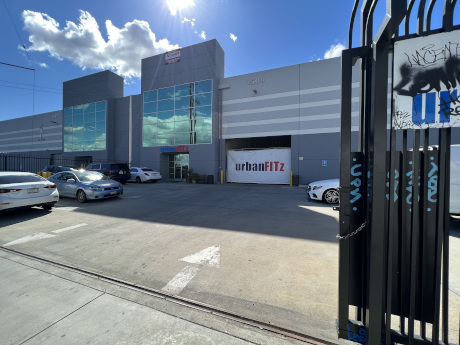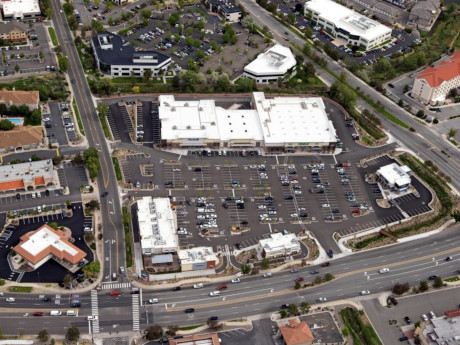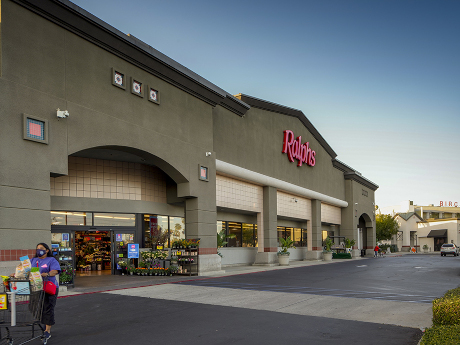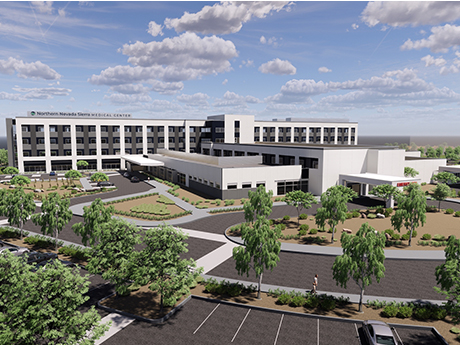By Elizabeth Capati, Associate, Colliers Greater Los Angeles A new trend has emerged across Greater Los Angeles’ industrial market that has developers waiting for under-construction projects to capture the highest possible rent near the final development stages or closer to their target completion dates. With rents increasing at historical rates, a certain hesitancy exists, and companies are less likely to sign a lease during earlier development stages. In some instances, landlords ask listing agents to place certain buildings or projects on the market months in advance to build momentum and pique interest. Still, those landlords elect not to review offers until a month or two before their target completion date. Los Angeles is a land-constrained market where all new developments come from knocking down older, functionally obsolete buildings or conversions from other property types. The more contemporary, state-of-the-art facilities with the tallest warehouses and functional loading set the high water mark for new lease rates. With a 0.6 percent vacancy across an 862-million-square-foot market, tenants will continue to aggressively bid for any new big box space that comes to market. The South Bay and San Gabriel Valley markets are the only areas with more than 1 million square feet of development activity. Activity and Incentives …
Western Market Reports
By Bret Nicholson, Retail Specialist, Marcus & Millichap Reno’s retail sector is setting records as of February 2022. Vacancies are hovering near an all-time low of 4.9 percent, and asking rents have risen to new heights, averaging $1.72 per square foot on a monthly basis. Sellers are achieving cap rates comparable to those seen in core markets, resulting in sale prices that many would not have thought possible only a few years ago. A number of factors have contributed to the continued absorption of retail vacancies in Reno. On a local level, Reno now has roughly 150 percent more six-figure jobs compared to 2015. This allows for more discretionary retail spending. In addition, very high construction costs and development delays have forced businesses to consider repurposing existing retail space. For example, a 24 Hour Fitness shuttered at 6155 Neil Road, leaving behind a vacant 24,000-square-foot special-use building. Not long after the health club’s exit, the Coral Academy of Science began renovating the space and is now an operational elementary school. Despite many vacancies having been repurposed and filled since 2020, demand for retail space in Reno continues. About 265,000 square feet of new construction is expected to be completed in 2022, which will be …
By Glenn R. Rudy, Senior Managing Director, Retail Capital Markets, Newmark We all know the commercial real estate industry is cyclical and there are casualties in every cycle across asset classes. However, retail seems to always be in everyone’s crosshairs. It quite frequently is the tail wagging the dog across institutional investors. Consider this, though: if there is one thing the pandemic has proven (once again), it is that the retail sector as a whole is one of the most resilient in the industry. Nowhere in the country is this statement more evident than here in Orange County. While investment sales activity was sluggish overall in 2021, picking up largely in the fourth quarter, retail leasing activity was record breaking. Annual net absorption turned positive after nine consecutive quarters of losses. Vacancy rates have not yet returned to pre-pandemic levels, but rent growth has reach a new all-time high as of year-end 2021. Tenants and landlords were both motivated to sign leases in 2021 to satisfy the increased market demand from consumers yearning to get out and be social again. Society wanted to spend its money on soft goods, dining out and enjoying the retail experience that was so sorely missed in 2020. On the investment …
By Shawn Jaenson, Senior Vice President, Industrial Specialist, Kidder Mathews The Northern Nevada industrial market is composed of 98.7 million square feet of industrial real estate spread across six submarkets. Northern Nevada’s centralized location allows for a one-day truck service to more than 60 million customers. Couple that with the fact that Nevada has no corporate tax, personal tax, inventory tax, franchise tax, or special intangible tax and the city is one of the most desirable industrial locations in the Western U.S. What was once thought of as unattainable in Northern Nevada has become the norm as nearly every record or statistic has been shattered and the market continues to show no signs of slowing. The overall market vacancy rate plummeted in 2021 to 1.7 percent, with a direct vacancy rate of 1.6 percent — a more than 200 percent decrease from the start of the year when overall vacancy rates were 5.3 percent and direct vacancy rates were 4.9 percent. Due to the unprecedented demand, new product in Northern Nevada has never been more crucial as new construction struggles to keep pace with market demand. In 2021, Northern Nevada had a positive net absorption of just over 7 million square feet, which …
By Bob Caudill, Executive Vice President, Colliers We continue to see a flight by tenants into low-rise office properties, typically four stories or less, and out of high rises. This trend began pre-pandemic, but COVID has undoubtedly accelerated its movement. Asking rates in the market have flattened, while concessions like free rent, beneficial occupancy and improvement allowances have increased. The surge in construction costs continues, putting stress on the economics of lease deals. In addition, construction material delivery delays have impacted the completion of tenant improvements. We will continue to see challenging times for office owners in the short-term as tenants are unsure how much space they need going forward. More tenants will also struggle to pay rent on time. In the long-term, although some industries have learned that they can remain successful with most of their employees working remotely, others are experiencing negative impacts on creativity and collaboration. As a result, their businesses have suffered financially, and they will require their employees to return to the office. Activity and Impact The Irvine Company’s Spectrum Terrace has set a new standard in design and quality for low-rise, Class A office properties. Tenants in this project are creating a workplace environment that employees will want …
By Robert Skinner, Broker-Salesperson, Sierra Nevada Properties Commercial Group Back in the day, Reno had lots of land, we did not need high density development and there was little reason to build vertically. Because of the efforts of state and community leaders, as well as economic development agencies like Economic Development Agency of Western Nevada (EDAWN) and the Northern Nevada Development Authority (NNDA), many companies relocated and expanded here. With the increase in jobs came the need for more housing. The multifamily rental vacancy rate in the Reno/Sparks area is currently below 2 percent, with fewer than 50 listings for townhouses and condominiums on the Northern Nevada Multiple Listing Service (MLS). The region has absorbed 750 acres per year since 2011, according to a recent study by Woods and Poole that utilized data from the Truckee Meadows Regional Planning Agency. The study further predicts the region will run out of developable residential land by 2038. The supply shortages are increasing the price of parcels, while landowners may not sell as they hold out for higher prices. This will accelerate the shrinkage of developable residential land. To meet demand, city planners are calling for higher density and vertical multifamily development. This means we …
By Terrison Quinn, Managing Principal, SRS Real Estate Partners Despite the headwinds facing the Orange County retail property sector in 2021, retailers experienced record sales, while shopping center owners realized all-time-high property values. Orange County’s retail vacancy rate also decreased in 2021 from 4.58 percent to 4.32 percent as compared to 2020, according to CoStar. Meanwhile, rents increased from $33.12 per square foot, per year to $34.55 per square foot, per year — back to pre-pandemic levels. There are many reasons for these impressive numbers, though less stringent COVID rules and the solid job market may be two key drivers. Orange County remained less restrictive on businesses than neighboring Los Angeles County. The county also seems to have been the economic benefactor given the less severe climb out of the vacancy and unemployment challenges that were experienced through the pandemic. Orange County’s job market was hit hard during the pandemic with its large employment base in hospitality and leisure. However, it bounced back quickly with Disneyland re-opening and others hiring thousands of workers amongst robust consumer demand. Orange County’s job market is also recognized as one of the more diverse and higher paying counties in Southern California. Investors Continue to Eye Orange County as the Gold Standard …
By Patrick Riggs, Senior Advisor, Office, Dickson Commercial Group The leasing market in Reno/Sparks is back on track following a strong end to 2021. The fourth quarter of 2021 concluded with an impressive 145,558 square feet of positive net absorption. This was the third straight quarter of positive net growth. Panasonic Energy stole the headlines in the quarter four with its 95,000-square-foot lease of 645 E. Plumb Lane in Reno’s central submarket. However, demand in the smaller office spaces under 5,000 square feet continues to be the driving force in this rebound. Local and regional companies with more flexibility to maneuver the pandemic were rewarded in 2020 and 2021 by capitalizing on aggressive landlord concessions. We are starting to see these concessions being rolled back as demand continues and vacancy nears pre-pandemic levels. The 2021 Reno sales market bounced back from 2020 with increases across the board in overall volume, price per square foot and number of sales. Both volume and the number of sales nearly doubled year over year. Average sales pricing is coming in at $300 per square foot, while new build-to-suit construction is over $400 per square foot with no slowdown in sight. Owner-users and office investors have been …
Job Gains, Visitors Returning Jolt Retail Consumption in Phoenix, While Growth Projections Buoy Investor Sentiment
by Jeff Shaw
By Ryan Sarbinoff, First Vice President, Regional Manager, Marcus & Millichap Retail metrics in the Valley have soundly improved after enduring some turbulence during the health crisis. Through the first nine months of 2021, net absorption totaled roughly 1.6 million square feet, putting the market on a trajectory to record its highest annual count since 2017. More than half of that absorption was logged between July and September, indicating that momentum is building. Phoenix retail market is in a much stronger position heading into 2022 Several factors are driving the uptick in retail space demand. Metro employment surpassed the pre- pandemic peak by August 2021, spearheading consumers’ ability to spend. At the same time, more seasonal residents are returning to the Valley after many chose not to travel in 2020, while tourism is also progressing. According to the City of Phoenix Aviation Department, passenger counts at local airports increased by 67 percent year-to-date through September relative to the same period last year. All these underlying forces benefit retail spending, and ultimately fuel tenant demand. Longer-term outlook is robust, piloted by growth trends Phoenix is expanding at a swift pace, with the metro’s favorable climate, quality of life and job availability attracting new residents. From the beginning of …
By John Stater, Research Manager, Colliers Southern Nevada gained 15,400 industrial jobs between August 2020 and August 2021, according to the Nevada Department of Employment, Training and Rehabilitation. The logistics and wholesale sectors added jobs on a year-over-year basis, while the natural resources and construction sectors lost jobs. Unemployment in the Las Vegas-Paradise MSA was 8.3 percent in August 2021. Over the past 12 months, total employment in Southern Nevada increased by 55,600 jobs, a 6.1 percent increase. Southern Nevada lost 241,900 jobs between February and April 2020 and had regained 71 percent of those lost jobs by August 2021. Southern Nevada is in its third major wave of post-Great Recession industrial development, with 6.6 million square feet of product now under construction. The fourth quarter of 2021 could see 2.3 million square feet of product added to inventory. Projects scheduled for completion in the fourth quarter of 2021 are currently 58 percent pre-leased. Projects completed this quarter were 98.8 percent pre-leased when completed. Net absorption this quarter was a record 4.45 million square feet. This brought net absorption up to 9.79 million square feet year-to-date, higher than the previous record for annual net absorption recorded in 2017. Warehouse/distribution net absorption …











